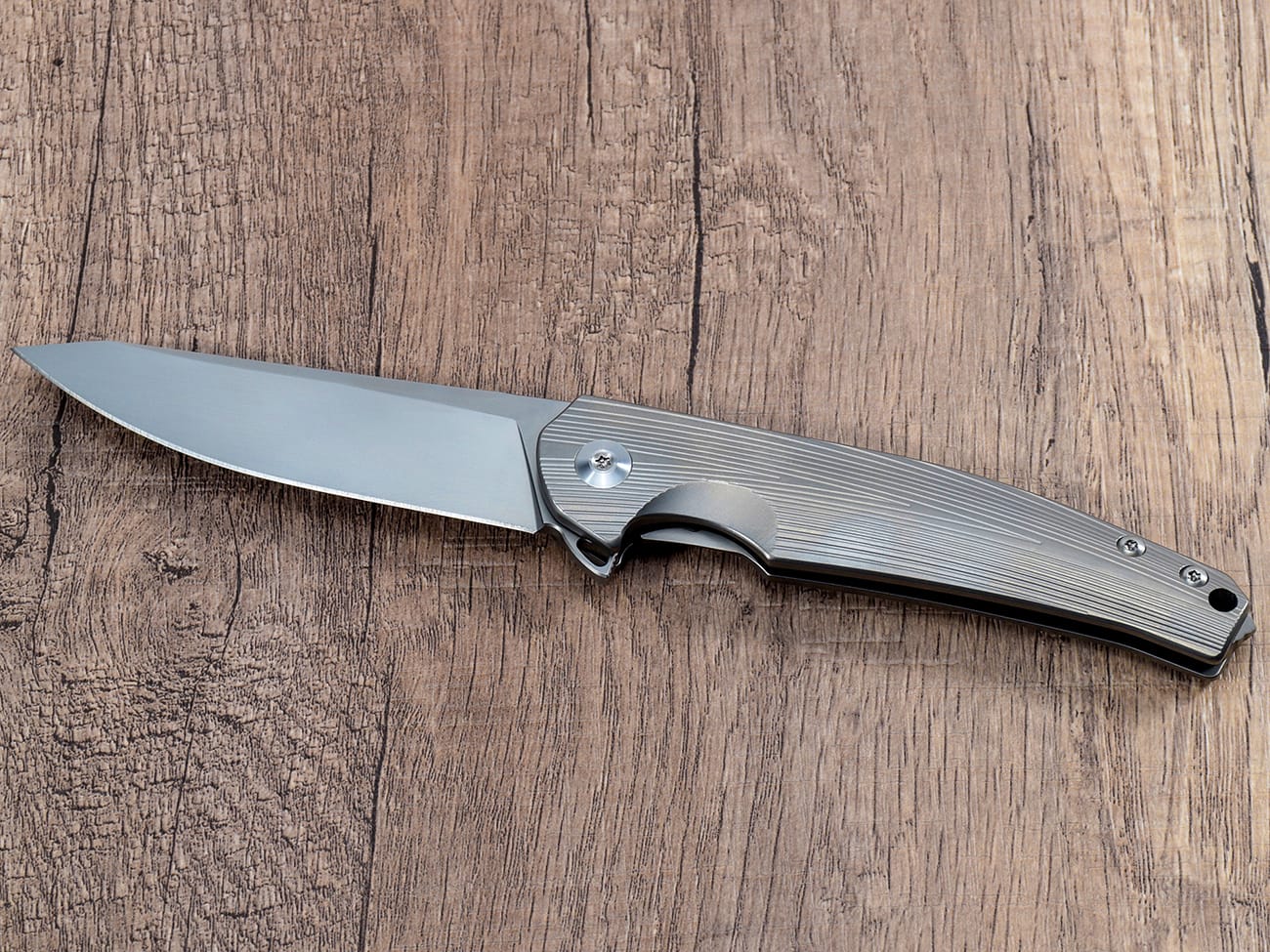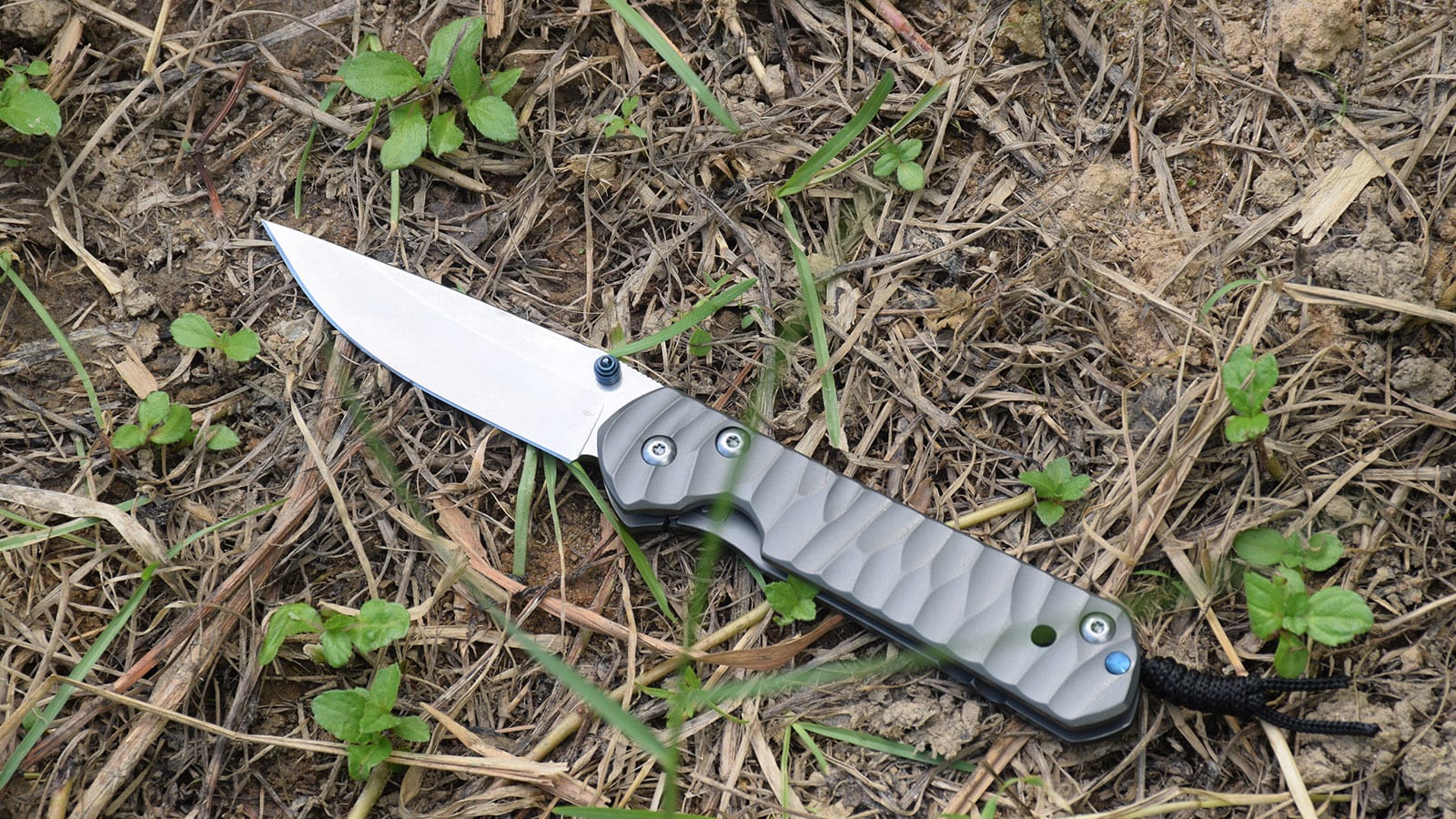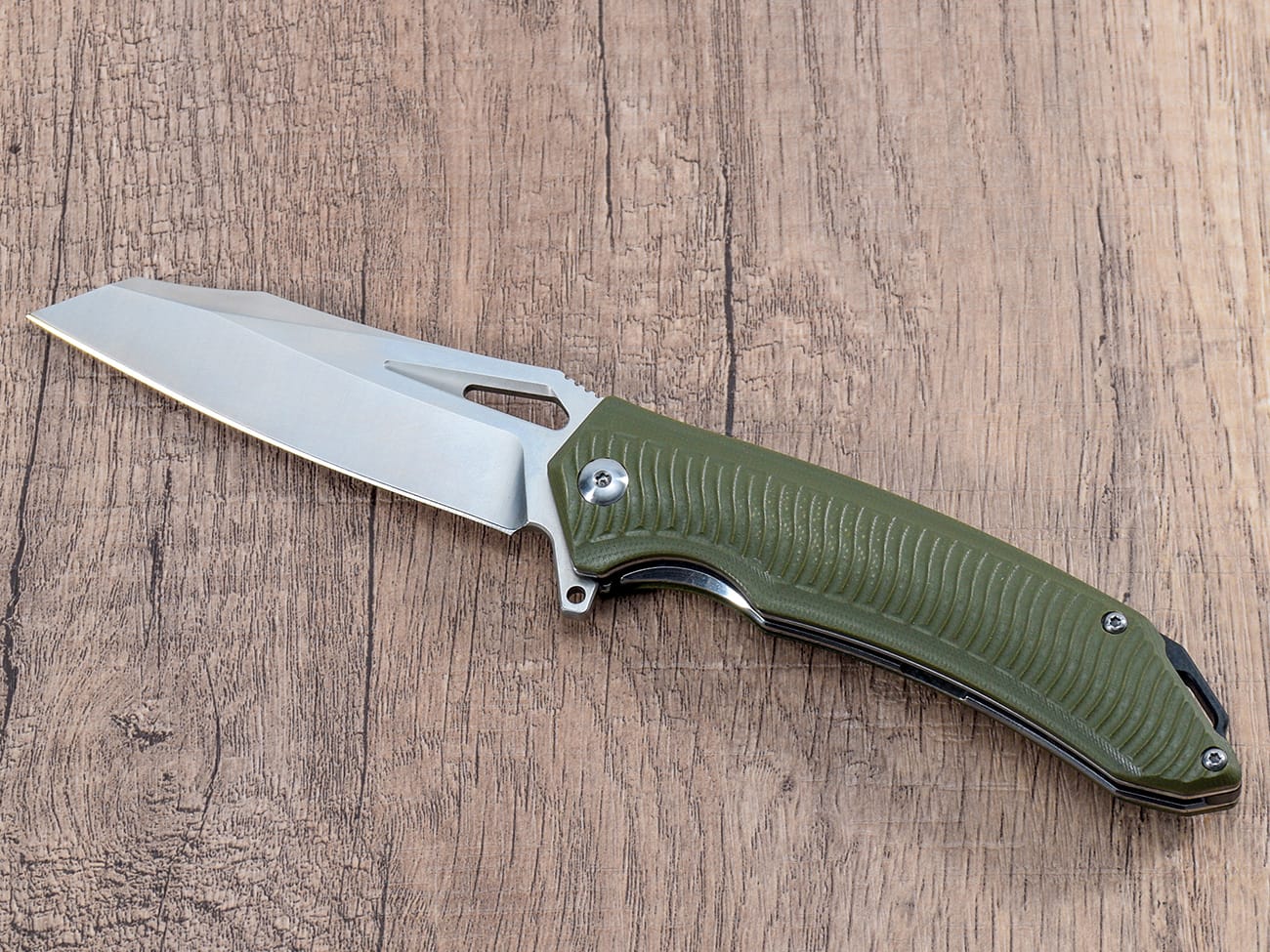Are you ready to take your knife-making skills to the next level? Whether you’re a seasoned bladesmith or an enthusiastic beginner, understanding how to heat treat D2 knife steel is crucial for creating high-performance blades. In this comprehensive guide, we’ll dive deep into the world of D2 steel and walk you through the intricate process of heat treating. By the end, you’ll have the knowledge and confidence to craft knives that are not only beautiful but also tough, sharp, and long-lasting.

Why Should You Care About Heat Treating D2 Steel?
Before we dive into the nitty-gritty of heat treating, let’s understand why it’s so important:
- Optimal Performance: Proper heat treatment unlocks the full potential of D2 steel, enhancing its hardness, toughness, and wear resistance.
- Consistency: Mastering the heat treatment process ensures that your knives perform consistently, batch after batch.
- Reputation: As a knifemaker, your reputation hinges on the quality of your blades. Well-treated D2 steel can set you apart from the competition.
- Cost-Effectiveness: D2 is a high-performance steel, and proper heat treatment ensures you’re getting the most value out of this premium material.
Now that we’ve piqued your interest, let’s explore the fascinating world of D2 steel and its heat treatment process!
What Exactly is D2 Steel?
D2 is a high-carbon, high-chromium tool steel known for its exceptional wear resistance and edge retention. It’s often referred to as a “semi-stainless” steel due to its corrosion resistance properties, which fall between those of high-carbon steels and true stainless steels.Composition of D2 steel:
- Carbon: 1.5-1.8%
- Chromium: 11-13%
- Molybdenum: 0.7-1.2%
- Vanadium: 1%
- Silicon: 0.6%
- Manganese: 0.6%
This unique composition gives D2 its desirable characteristics, but it also makes the heat treatment process more complex compared to simpler steels.
Why is Heat Treating D2 Steel Challenging?
Heat treating D2 steel can be tricky for several reasons:
- High Hardenability: D2 is an air-hardening steel, which means it can harden even with relatively slow cooling rates.
- Carbide Formation: The high carbon and chromium content leads to the formation of large carbides, which can affect the steel’s toughness if not properly managed.
- Narrow Temperature Window: D2 has a relatively narrow temperature range for optimal heat treatment, requiring precise control during the process.
- Decarburization Risk: D2 is susceptible to decarburization (loss of carbon from the surface) at high temperatures, which can affect the blade’s performance.
Despite these challenges, with the right knowledge and techniques, you can successfully heat treat D2 steel to create exceptional knife blades.
What Equipment Do You Need for Heat Treating D2 Steel?
Before we get into the process, let’s make sure you have the necessary tools and equipment:
- Heat Source: A high-temperature furnace or forge capable of reaching and maintaining temperatures up to 2000°F (1093°C).
- Temperature Measurement: A reliable pyrometer or thermocouple for accurate temperature readings.
- Quenching Medium: Oil suitable for quenching high-alloy steels.
- Tempering Oven: A separate oven for the tempering process, capable of maintaining consistent temperatures between 300-1000°F (149-538°C).
- Protective Gear: Heat-resistant gloves, safety glasses, and appropriate clothing.
- Stainless Steel Foil: For wrapping the blade to prevent decarburization.
- Magnet: To check for the critical temperature during heating.
- File: For testing hardness after quenching.
With your equipment ready, let’s dive into the step-by-step process of heat treating D2 steel.
How Do You Anneal D2 Steel?
Annealing is often the first step in preparing D2 steel for heat treatment. This process softens the steel, making it easier to work with and shape before the final hardening process.
- Heat the steel slowly to 1600-1650°F (871-899°C).
- Hold at this temperature for 1 hour per inch of thickness.
- Cool slowly in the furnace to 1000°F (538°C) at a rate of 20-40°F (11-22°C) per hour.
- Continue cooling to room temperature in still air.
Annealing D2 steel can significantly improve machinability and reduce the risk of cracking during the hardening process.
What’s the Process for Hardening D2 Steel?
Hardening is where D2 steel gains its exceptional wear resistance and edge retention properties. Follow these steps carefully:
- Preheat: Slowly heat the blade to 1500-1550°F (816-843°C) and hold for 10-15 minutes per inch of thickness.
- Austenitize: Raise the temperature to 1850-1900°F (1010-1038°C) and hold for 20-30 minutes.
- Quench: Rapidly cool the blade in preheated oil (around 150°F or 66°C) or cool in still air for smaller sections.
- Temper: Immediately after quenching, temper the blade to reduce brittleness and achieve the desired hardness.
Remember, D2 is an air-hardening steel, so even air cooling can result in a hard blade. However, oil quenching is often preferred for more consistent results and to achieve maximum hardness.
How Do You Temper D2 Steel?
Tempering is crucial for balancing hardness with toughness in D2 steel. Here’s how to do it:
- After quenching, allow the blade to cool to room temperature.
- Heat the blade to the desired tempering temperature, typically between 300-1000°F (149-538°C).
- Hold at this temperature for 2 hours per inch of thickness, with a minimum of 2 hours.
- Air cool to room temperature.
- Repeat the tempering process two more times for a total of three tempering cycles.
The tempering temperature will depend on your desired final hardness. Here’s a general guide:
- 300-400°F (149-204°C): 60-62 HRC
- 400-750°F (204-399°C): 58-60 HRC
- 750-1000°F (399-538°C): 54-58 HRC
Remember, higher tempering temperatures result in lower hardness but increased toughness.
Should You Consider Cryogenic Treatment for D2 Steel?
Cryogenic treatment can further enhance the properties of D2 steel by transforming any retained austenite into martensite. Here’s how to incorporate it into your heat treatment process:
- After quenching, allow the blade to cool to room temperature.
- Place the blade in a cryogenic chamber or submerge it in liquid nitrogen (-320°F or -196°C).
- Hold at this temperature for 1-2 hours.
- Allow the blade to slowly warm to room temperature.
- Proceed with the tempering process as described earlier.
Cryogenic treatment can improve wear resistance and dimensional stability in D2 steel, but it’s not always necessary for achieving good performance.
What Are Some Common Mistakes to Avoid When Heat Treating D2 Steel?
Even experienced knifemakers can run into issues when heat treating D2 steel. Here are some common pitfalls to watch out for:
- Overheating: Exceeding the recommended austenitizing temperature can lead to excessive grain growth and brittleness.
- Inadequate Soaking Time: Not holding the steel at the austenitizing temperature long enough can result in incomplete hardening.
- Improper Quenching: Using the wrong quenchant or quenching too slowly can lead to inadequate hardness.
- Skipping Tempering: Failing to temper or inadequate tempering can result in a brittle blade prone to chipping or breaking.
- Inconsistent Tempering: Not maintaining a consistent temperature during tempering can lead to uneven properties across the blade.
- Neglecting Surface Protection: Failing to protect the blade surface during heating can lead to decarburization and poor performance.
By being aware of these potential issues, you can take steps to avoid them and ensure consistent, high-quality results.
How Can You Test the Success of Your Heat Treatment?
After completing the heat treatment process, it’s important to verify that you’ve achieved the desired properties. Here are some methods to test your D2 steel blade:
- Hardness Testing: Use a Rockwell hardness tester to check if you’ve reached your target hardness.
- File Test: A simple file test can give you a quick indication of the blade’s hardness.
- Cutting Tests: Perform standardized cutting tests to evaluate edge retention and wear resistance.
- Toughness Tests: Carefully test the blade’s ability to withstand impact without chipping or breaking.
- Corrosion Resistance: Expose a small area to corrosive substances to check the blade’s resistance.
Remember, consistent testing and documentation will help you refine your heat treatment process over time.
Where Can You Learn More About Heat Treating D2 Steel?
If you’re looking to deepen your knowledge of heat treating D2 steel, consider these resources:
- Knife Steel Nerds: An excellent website with in-depth articles on knife steels and heat treatment.
- Bladeforums: A community of knife enthusiasts and makers where you can ask questions and share experiences.
- Heat Treater’s Guide: Practices and Procedures for Irons and Steels: A comprehensive reference book on heat treating various steels.
- Local Knifemaking Workshops: Many experienced knifemakers offer workshops where you can learn hands-on techniques.
Conclusion: Mastering D2 Steel Heat Treatment
Heat treating D2 steel is both an art and a science. By understanding the process and paying attention to the details, you can unlock the full potential of this exceptional knife steel. Remember these key points:
- D2 steel requires precise temperature control during heat treatment.
- Proper annealing can improve workability before hardening.
- The hardening process involves careful preheating, austenitizing, and quenching.
- Tempering is crucial for balancing hardness and toughness.
- Cryogenic treatment can further enhance D2’s properties.
- Consistent testing and documentation will help you refine your process.
With practice and persistence, you’ll be crafting D2 steel knives that showcase the best of this remarkable material. Happy knifemaking!For more information on knife materials and techniques, check out our articles on damascus blades and stainless steel blades. And if you’re interested in exploring different handle materials, don’t miss our guide on G10 handles and wooden handles.




